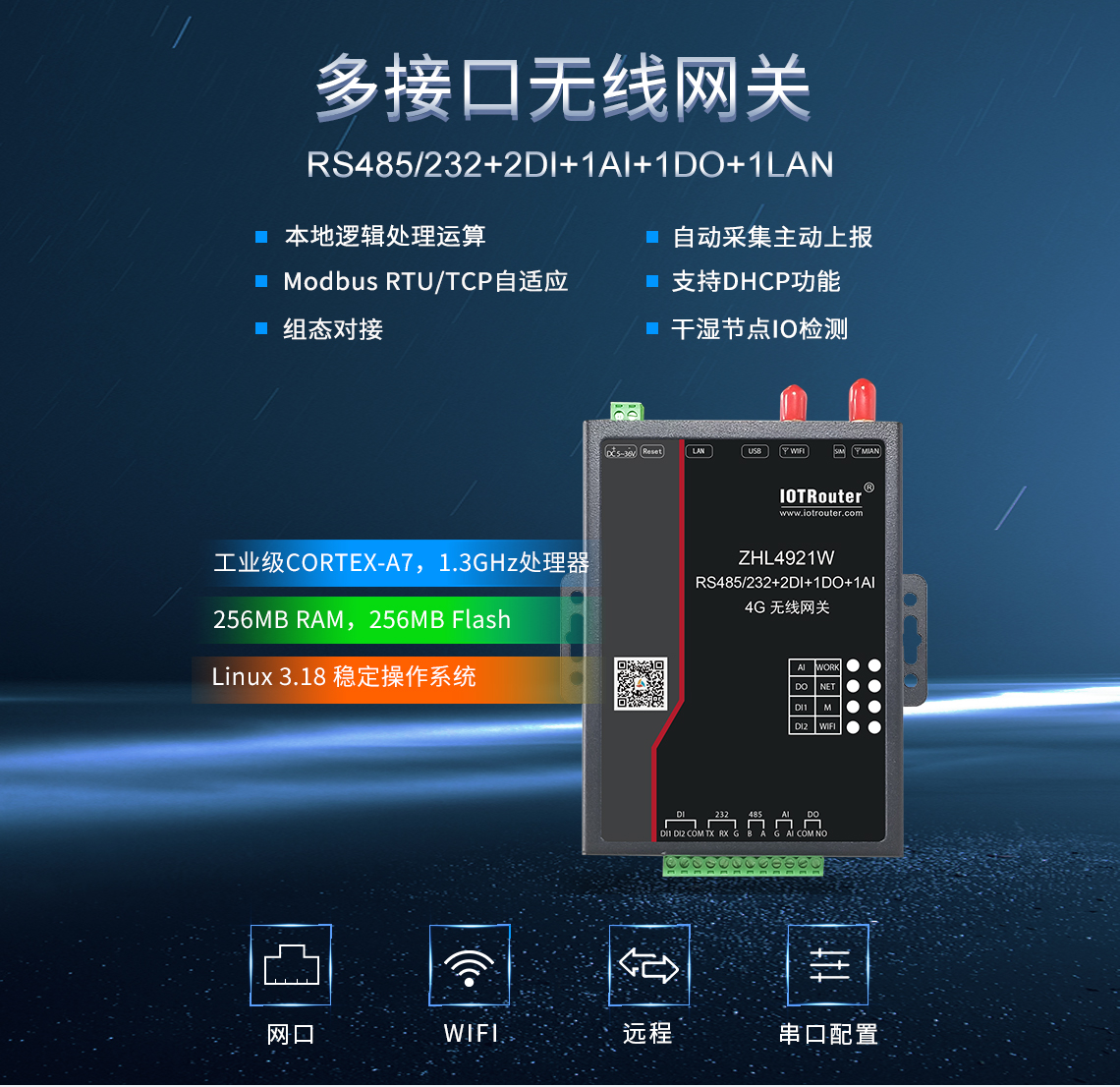Introduction to 4g router
Based on the embedded Linux system, a wireless Routeur 4g that uses WiFi technology to share 4G bandwidth is designed and implemented. The router supports UMTS/GSM/CDMA and TDD/FDD-LTE network standards, achieving compatibility with various 3G/4G network standards. After introducing the design of the router in detail, it focused on the establishment of the router’s wireless LAN and 3G/4G network access, and realized the interoperability of the wireless LAN and 3G/4G network. Finally, the function of the router was tested using multiple intelligent terminal devices. The test results proved the reliability and effectiveness of the router design.

In this paper, a wireless router is designed and implemented to share 4G bandwidth by using WiFi technology based one em-bedded Linux system. TheUMTS/GSM/CDMA and TDD/FDD-LTE standards are supported in therouter. After detailed introduction—tion of the router’s application design scheme, the establishment of WIAN and the access of 3G/4G networks are focused on. The connection between WLAN and 3G/4G network embedded Linux system is realized according to this router. Atlast therouter’s function is tested by some smart terminals. Thereliability and stability of this router design were proven through the test results.
4G router functions
Tip: If you need to view the graphic function explanation, please visit: https://www.iotrouter.com/product/31.html
◆ Industrial grade Cortex-A7, 1.3GHz processor
◆ 256MB RAM, 256MB Flash
◆Linux 3.18 stable operating system
◆ High-speed 4G wireless data network transmission and routing Internet access functions
◆ Support NTP function to realize automatic network time adjustment
◆ 1 channel 10/100M industrial Ethernet interface
◆ 1 channel RS485/RS232 serial interface
◆ Interface: AI*1/ DI*2/ DO*1
◆Support MODBUS RTU and MODBUS TCP protocol adaptation
◆ Support setting the direction of active data reporting
◆ Support TCP_Client, MQTT, HTTP_Client
◆ Interface: AI*1/ DI*2/ DO*1
◆ Supports two working modes: host mode and slave mode. The host mode supports cascading multiple Modbus devices
◆ Internal self-inspection mechanism to ensure stable operation of equipment
◆ Support cloud forwarding and cloud networking
◆Support network port, WIFI, remote and serial port configuration
◆Multiple indicator lights show working status
◆ Support domain name address resolution
◆ Support setting APN
◆ Save and download operation logs after power failure
◆Support SIM card number query
◆ Support custom heartbeat package
◆ Supports multiple registration packages (ID, CCID, custom) to ensure the legality and uniqueness of device identity
◆Support WIFI hotspot/GPS positioning
◆ Support 10*10KB network/serial port data cache
◆Support timing flip of relay status
3G access technology has developed from WCDMA/TD-SCDMA/CD-MA2000 to HSDPA, HSUPA and HSPA, and has begun to transition from 3G networks to 4G networks. At present, the access bandwidth of HSDPA can reach 7.2Mbps, the access bandwidth of HSPA can reach 21Mb~ps, and the network bandwidth of the LTE to be deployed can even reach 100Mbps. At the same time, due to the rapid growth in the number of smart terminals connected to the mobile Internet, people’s demand for mobile Internet applications is also growing. When people are faced with bandwidths of tens of megabytes or even hundreds of megabytes, there must be a problem of excess bandwidth. That is, people do not need such a large bandwidth at any time, so the excess user bandwidth can be allocated to more users. .
Currently, WiFi technology can support IEEE’s 802.11b, 802.11g and 802.1ln standards, supporting wireless transmission rates of 10Mbps, 54Mbps and 300Mbps respectively. In terms of transmission distance, WiFi can achieve complete coverage within a range of several meters to 100rn.
Based on the growing access bandwidth of 3G/4G and the advantages of WiFi technology, this article proposes a wireless router design scheme that shares 3G/4G network bandwidth. This solution first uses an embedded Linux system to build a wireless LAN based on WiFi technology. Users such as smart terminals can use their own WiFi functions to access the wireless LAN, and then bridge the wireless LAN to the 3G/4G network, thus Realize the sharing of 3G/4G network bandwidth among various intelligent terminal devices.
Keywords: 4G industrial router